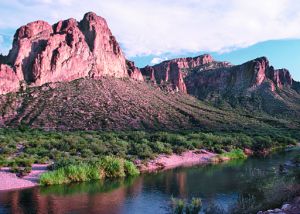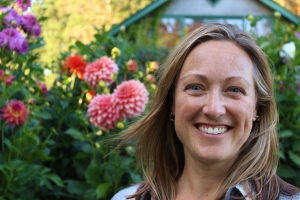I spend a fair amount of time in the Phoenix area visiting my sister and her family. The warm winter days are a great alternative to blocking the cold drafts that sneak through my 100 year old windows in Denver. I visited last fall and was happy to attend a luncheon panel on the Colorado River presented by Arizona Forward which my sister’s law firm sponsored. At that event, the Arizona Community Foundation launched its Water Consciousness Challenge, a project within the New Arizona Prize. The challenge sought to create meaningful

Water flows near Phoenix, AZ. Tim McCabe / Photo courtesy of USDA Natural Resources Conservation Service., via Wikimedia Commons
opportunities to raise the public’s consciousness about water scarcity, motivate people to become more educated and compelled by this future threat, and ultimately drive the development of new and innovative solutions to Arizona’s water consumption needs.
The funding partners put up a $100,000 prize to implement a creative and compelling digital content strategy that will drive broad public understanding of water scarcity issues and move these issues to the forefront of Arizonans’ minds.
The winner of the $100,000 prize, Arizona filmmaker Cody Sheehy, was just announced, and I am excited to follow the progress of the team’s project, Beyond the Mirage: Arizona’s Water Reality.
From a recent AZCentral article:
Website visitors will find hundreds of clips on a variety of topics including legal structures that govern water rights, information on monsoon rain and winter snowpacks, how water consumption among lower-basin states is intertwined and steps the state may need to take to avoid a crisis, Sheehy said.
Users will be able to select clips and make their own mini-documentaries using editing tools on the website. The aim is that they share it with their friends, and their friends get inspired to make their own videos.
The idea is that the design matches how young people want to learn and experience the Web: to not passively read or watch content, but to interact with it, search it and create something from it, Sheehy said.
I love the idea of community leaders stepping forward to support the use of creativity and technology to solve societal problems. I applaud the Arizona Community Foundation and its partners for investing in water awareness tools. We have a strong track record of public funding for water education in Colorado, but our state’s private foundations and business groups have yet to invest in a meaningful way. I believe that Arizona’s Water Consciousness Challenge is also a challenge to other states in the Colorado River Basin to examine and prioritize water education.


 Print
Print
Reblogged this on Coyote Gulch.